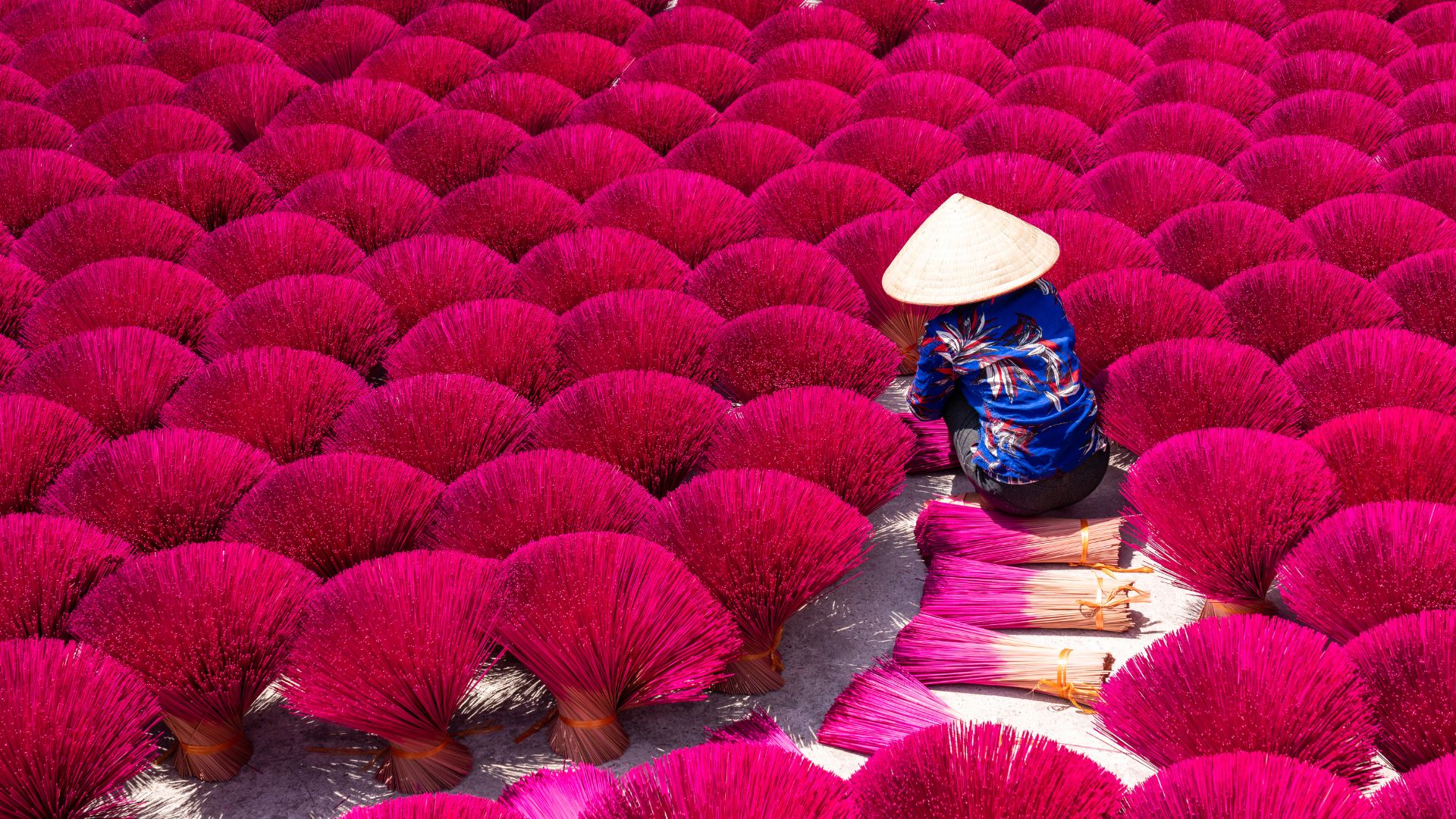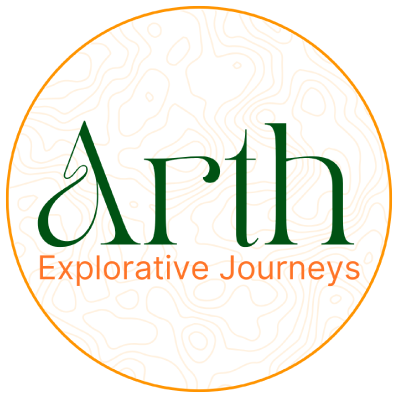
Vietnam
Vietnam is a land of timeless beauty where limestone cliffs rise above the emerald waters of Ha Long Bay, bustling streets in Hanoi hum with energy, and the terraced fields of Sapa reflect centuries of tradition. A Vietnam tour is more than just a holiday – it’s an invitation to slow down, savour, and connect. Whether you’re seeking the charm of hidden villages, the serenity of landscapes shaped by time, or authentic encounters that define slow travel in Vietnam, every corner offers a chance for deep cultural immersion. For travellers planning a Vietnam trip, the country reveals itself like a story unfolding—layered, rich, and unforgettable.
Top Things to Do in Vietnam
The tracks of time - Vietnam by train
In the late 19th century, French engineers set out to link Hanoi and Saigon with over 1,700 kilometers of railway. More than iron and timber, it was a lifeline connecting north and south, later turning into a strategic prize during the Vietnam War. Bridges toppled, tracks were torn, and trains ground to a halt. From these scars, the railway was rebuilt, stitching a nation together and carrying stories of resilience along its tracks.
Today, Vietnam’s railway network hums with life, connecting cities, villages, and landscapes. The Vietnam Luxury Express offers travelers a chance to glide through this history in comfort and style, tracing routes that once shaped the nation. Are you ready to step aboard and experience Vietnam’s story, one elegant mile at a time?
Civet Coffee: Nature’s Connoisseurs at Work
Amid Vietnam’s misty highlands, civets quietly roam the coffee plantations, tasting only the ripest, juiciest cherries. Sick trees or underripe fruit are ignored—these discerning creatures ensure that only the best beans are selected. What emerges after digestion are beans naturally curated by nature itself, each one a testament to careful selection and quality.
Roasted with care, these beans transform into cà phê chồn, prized for its smooth, complex aroma and depth of flavor. It’s more than coffee—it’s a ritual perfected over centuries, blending patience, curiosity, and tradition.
Are you ready to taste the cup chosen by nature’s most unexpected connoisseurs?
Learn from a Master Textile Artist
In the northern highlands of Vietnam, the H’mong people have long revered indigo as a sacred colour, believing it to hold protective powers. Traditionally, indigo dyeing was a communal activity, with women gathering to dye textiles under the full moon, a practice thought to enhance the dye’s potency. This deep blue hue symbolized wealth and status, and garments dyed in indigo were often passed down through generations.
Today, this ancient craft is experiencing a resurgence. You will spend time with a master textile artist, learning hands-on how to cultivate natural dyes from plants such as indigo, yam, and magenta. Using traditional techniques, you’ll create your own sustainable textile, blending heritage with contemporary design.
Will you immerse yourself in this centuries-old tradition, learning to dye with plants and crafting your own piece of wearable art?
Phong Nha-Kẻ Bàng: Discover Vietnam’s Largest Cave
Deep within Vietnam’s Phong Nha-Kẻ Bàng National Park lies Hang Sơn Đoòng, the world’s largest cave passage, stretching over 5.5 miles. In 1990, local farmer Ho Khanh stumbled upon a narrow, seemingly unremarkable opening while hunting in the jungle. Curious, he ventured inside and realized he had found something extraordinary—an underground world of towering stalagmites, subterranean rivers, and hidden ecosystems.
For years, the cave remained largely unknown to the outside world. It wasn’t until 2009 that a team of British cavers, guided by Khanh, fully explored and mapped its vast chambers. Today, Hang Sơn Đoòng has become a sought-after destination for adventurers from around the globe, offering a rare chance to experience a natural wonder that blends awe-inspiring scale with untouched beauty.
Are you ready to follow in Ho Khanh’s footsteps and explore a cave so immense it could house a 40-story skyscraper?
Guardians of the Water Puppet Tradition
Long ago, when farmers stood knee-deep in flooded rice fields, they found joy in telling stories through puppets that danced upon the water. Dragons rose from the ripples, phoenixes spread their wings, and everyday village life was transformed into playful theatre. The water became their stage, the puppets their voice, and the laughter their music.
Today, that tradition lives on in a town where this art has never been forgotten. Craftsmen still carve puppets from wood, paint them in bright colours, and let them glide across water to retell legends, myths, and village tales. What once kept farmers entertained after a hard day’s labour is now celebrated as a living heritage, enchanting audiences from near and far.
Will you visit the community that has kept this art alive for generations?
Vietnam Travel by Season
Vietnam stretches along the South China Sea with diverse landscapes that shape its weather—ranging from cool mountain breezes in Sapa to the tropical warmth of Hanoi and the coastal charm of Ha Long Bay. The country moves through three main moods: the dry season, the rainy season, and a pleasant shoulder season.

Mùa Khô / Dry Season
November to April
Pleasant weather, sunny days – best for cruising Halong Bay, exploring Hanoi’s Old Quarter, and beach escapes.
Recommended Destinations:
Hanoi, Halong Bay, Phong Nha Caves, Hoi An, Phu Quoc

Mùa Mưa / Wet Season
May to October
Lush green landscapes, dramatic skies – perfect for rice terrace treks, waterfalls, and cultural immersion.
Recommended Destinations:
Sapa, Ninh Binh, Mekong Delta, Da Nang, Hue
Vietnam Travel: FAQs
What is the best time to visit Vietnam for travellers?
The best time to visit Vietnam is between November and April when the weather is cooler and drier, ideal for exploring Hanoi, Ha Long Bay, and Ho Chi Minh City. Central Vietnam (Hoi An, Hue, Da Nang) is best from February to May, while the north offers beautiful trekking conditions in September and October.
How many days are enough for Vietnam?
For most travellers, 7 to 10 days are enough to see Vietnam’s highlights, such as Hanoi, Ha Long Bay, and Ho Chi Minh City. With 12 to 14 days, you can add central gems like Hoi An and Hue, or even trek in Sapa. A 3-week trip allows for a deeper cultural and regional experience across the country.
What kind of traveller is Vietnam ideal for?
Vietnam is perfect for travellers who enjoy a mix of culture, history, and adventure. It appeals to food lovers, backpackers, and families alike. History enthusiasts can explore ancient towns and war sites, while nature seekers enjoy trekking in the north or relaxing on Phu Quoc’s beaches.
What is Vietnam famous for?
Vietnam is famous for its UNESCO heritage sites, dramatic landscapes, and delicious cuisine. Highlights include Ha Long Bay, the lantern-lit streets of Hoi An, and French colonial architecture in Hanoi and Ho Chi Minh City. It’s also known for pho, banh mi, and vibrant street food culture. Beyond sightseeing, Vietnam offers wellness and holistic rejuvenation through meditation retreats at monasteries, traditional healing practices, and spiritual experiences that attract travellers seeking balance and renewal.
Is Vietnam part of Asia?
Yes, Vietnam is part of Southeast Asia, located on the eastern edge of the Indochina Peninsula. It borders China, Laos, and Cambodia, and has a long coastline along the South China Sea. Its location has shaped Vietnam’s unique culture, blending Southeast Asian traditions with Chinese and French influences.
Do Indian travellers need a visa to visit Vietnam?
Yes, Indian travellers require a visa to visit Vietnam. E-visas are available online for stays of up to 30 days and are simple to apply for. Visa-on-arrival is also an option when arranged through approved travel agents. Always check the latest requirements before travelling, and you can verify details on the official Vietnam visa portal.
What currency is used in Vietnam, and can travellers use credit cards?
The official currency of Vietnam is the Vietnamese Dong (VND). Credit and debit cards are accepted in larger hotels, restaurants, and shops in big cities, but cash is essential in smaller towns, local eateries, and markets. ATMs are widely available across the country.
What language is spoken in Vietnam?
The official language of Vietnam is Vietnamese. English is increasingly common in major cities, tourist areas, and among younger generations. In rural areas, English may be limited, but travellers usually find locals very helpful and accommodating.
What local etiquette should travellers follow in Vietnam?
Vietnamese culture values politeness and respect. Dress modestly when visiting temples and pagodas, remove shoes before entering homes or sacred sites, and avoid touching people on the head. Public displays of affection are not common, and using both hands when giving or receiving items is considered polite.
What should travellers know about Vietnamese food and dietary options?
Vietnamese cuisine is light, fresh, and full of flavour. Must-try dishes include pho (noodle soup), banh mi (baguette sandwich), and spring rolls. Vegetarians will find plenty of options, as many dishes use tofu and fresh vegetables. Street food is a highlight, and food tours are a great way to explore the local culture.
Is Vietnam budget-friendly, and how much should travellers budget per day?
Vietnam is very budget-friendly compared to many destinations. Travellers can expect to spend INR 3,500–6,500 per day for mid-range comfort including meals, stays, and transport. Backpackers can travel for less, while luxury hotels and cruises on Ha Long Bay will cost more.
What are the main airports in Vietnam for international travellers?
Vietnam’s main international airports are Noi Bai International Airport in Hanoi, Tan Son Nhat International Airport in Ho Chi Minh City, and Da Nang International Airport in central Vietnam. These airports are well connected to major global hubs, making it easy to plan multi-city itineraries.
How easy is it to travel around Vietnam?
Travelling within Vietnam is relatively easy with flights, trains, and buses connecting major cities. Domestic flights are affordable and time-saving, especially between Hanoi and Ho Chi Minh City. Trains are popular for scenic journeys, while overnight buses connect smaller towns. For flexibility, private transfers and guided tours are also widely available.
Is it safe and legal for foreigners to drive or rent cars in Vietnam?
Foreigners can drive in Vietnam with an international driving permit, but renting cars for self-driving is less common due to traffic congestion and different driving styles. Most travellers prefer hiring a car with a driver, which is affordable and safer. Motorbike rentals are popular, but riders should be cautious and experienced.
What is the connectivity like between major cities in Vietnam?
Vietnam has strong connectivity between its major cities. Daily flights link Hanoi, Ho Chi Minh City, and Da Nang, while trains run along the scenic Reunification Express route connecting the north and south. Buses are widely available and budget-friendly, though they take longer for cross-country travel.
Discover our carefully curated selection of itineraries to indulge your happy feet. Embark on a journey of discovery in the most intimate setting tailored to your travel needs.
Inspired by what you see? Connect with us to design a meticulously curated journey with our travel ARTHitect — the journey of your dreams is just a conversation away.
